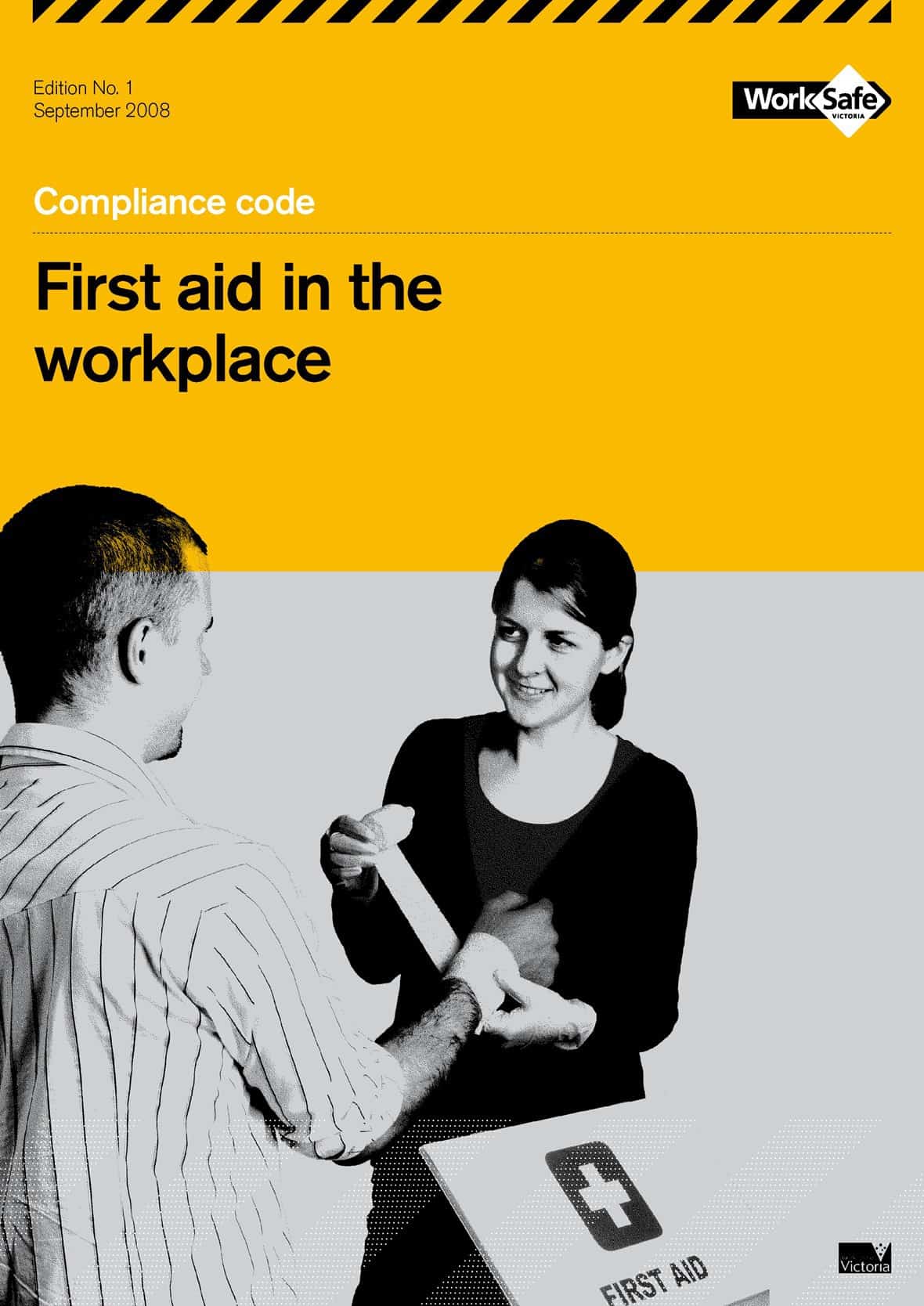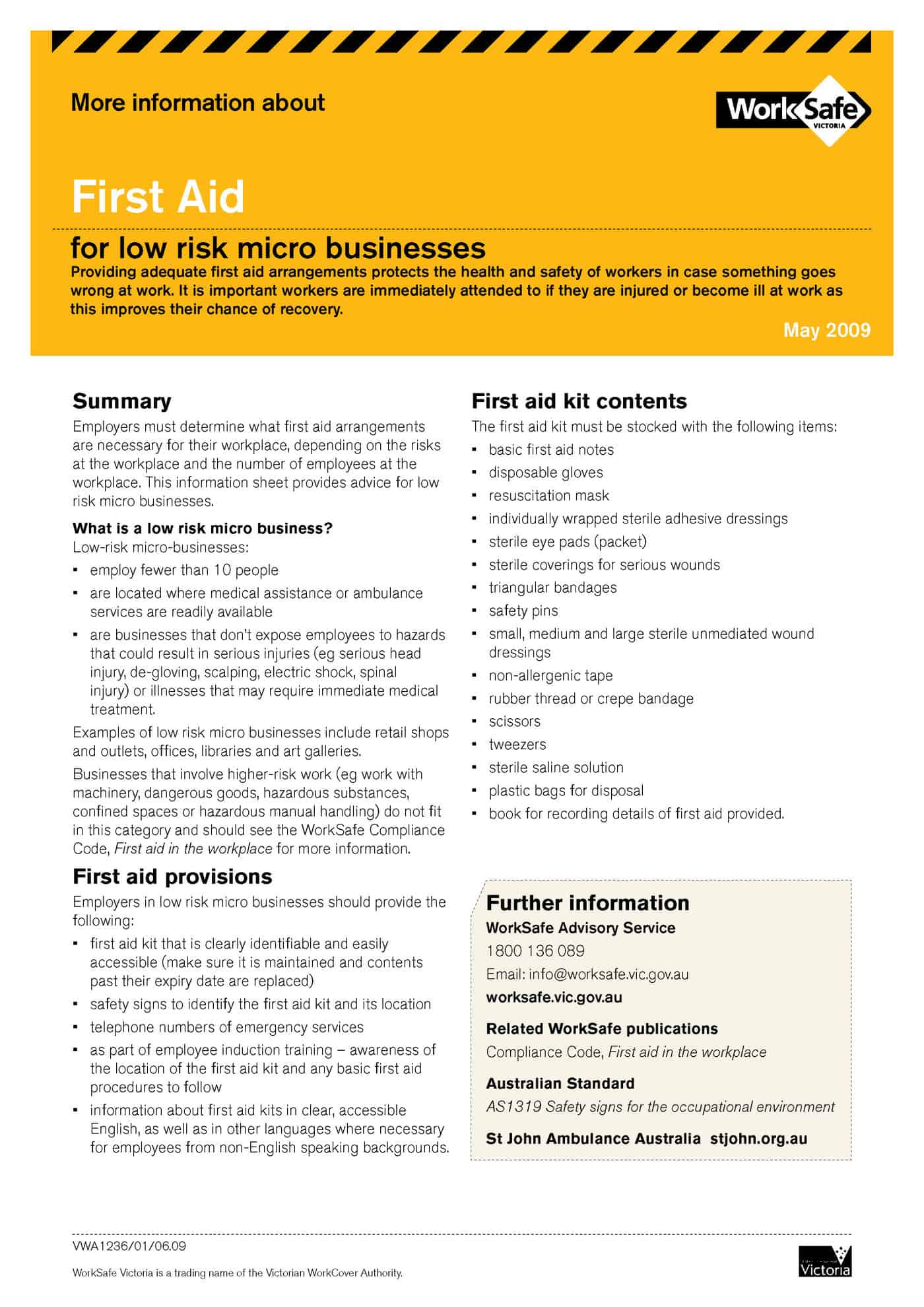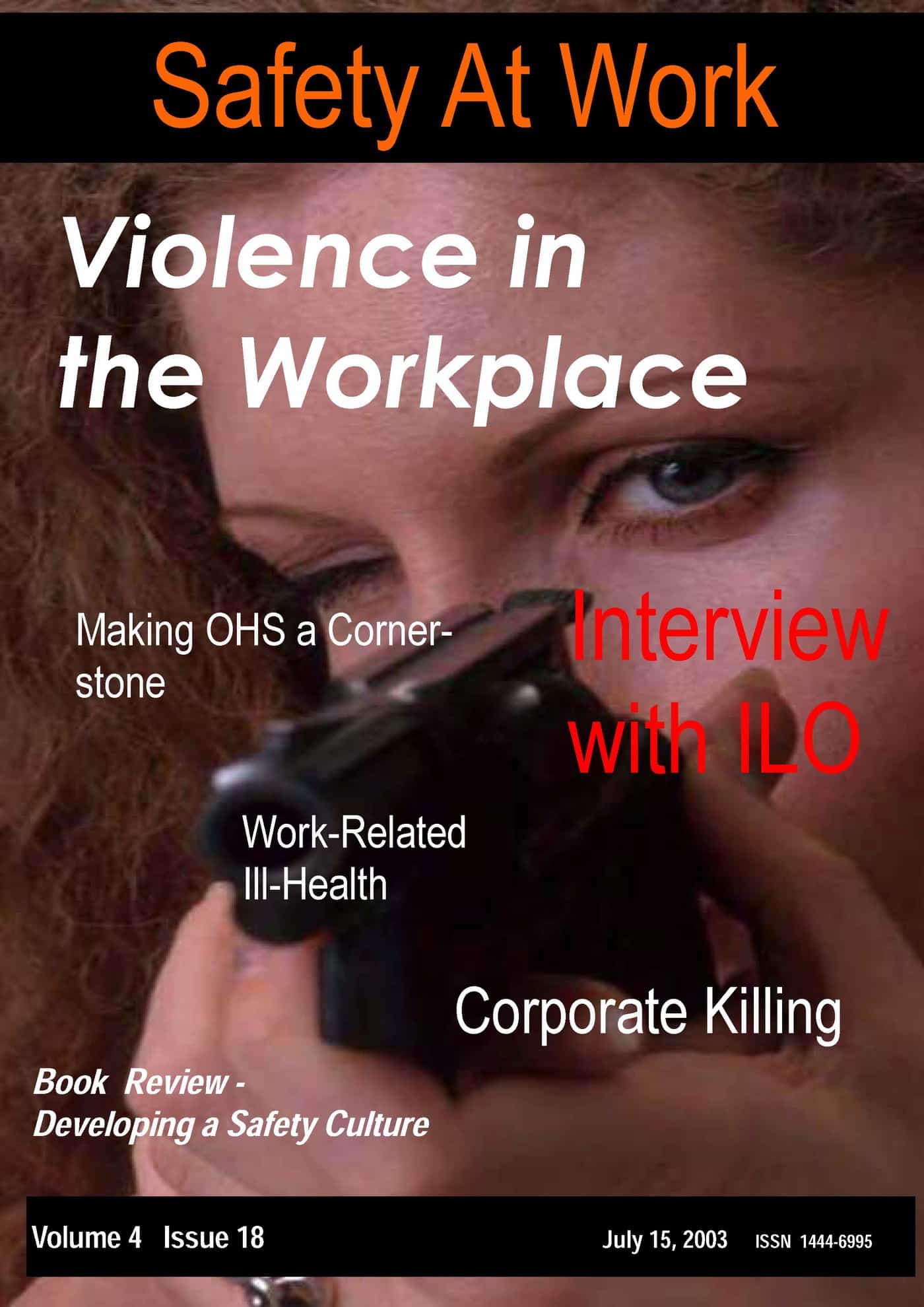WorkSafe contacted me today concerning some issues raised in a previous post concerning their first aid information. Some small tweaks have been made to that post but one point required elaboration. There is some dispute over whether low risk micro businesses require a trained first aider. Below is my position.
FIRST AID NEEDS ASSESSMENT
The First Aid Compliance Code discusses a first aid needs assessment. In our experience of assessing scores of workplaces, large and small, for first aid needs (including over 28 McDonald’s restaurants but that’s another story), we are convinced that a workplace that relies on others to provide an acceptable level of emergency first aid response would expose the employer to avoidable legal issues. Unless, of course, one relies on “as far as is reasonably practicable” after someone may have been seriously injured or died on your premises. It is doubtful that the relatives of the deceased would be so forgiving. (Consider the actions of concerned relatives following the Kerang court case decision.)
Ask yourself, is it better to have a trained first aider on site just in case, or rely on an ambulance being readily available and render no assistance?
Time is crucial in an emergency, with the risk of a person’s condition becoming more serious the longer treatment is delayed. Emergency ambulances, even in metropolitan areas, can be delayed and, in an emergency, waiting with an unconscious and/or non-breathing person will seem an eternity. Any delay in rendering appropriate first aid treatment will complicate proving that an appropriate duty of care was applied in the circumstance.
The Australian Resuscitation Council has made its guidelines available online. For those interested in establishing an appropriate level of first aid response for their workplaces, the guidelines are recommended to read. But more importantly is the need to have suitably trained first aiders on site, particularly after an assessment of the workplace’s first aid needs has been conducted. A first aid kit is next to useless if CPR is required.
Of course, the need for first aid is minimised if all the other OHS matters are dealt with first in an orderly safety management system.

![p090616615[1] cover p090616615[1] cover](http://safetyatworkblog.files.wordpress.com/2009/06/p0906166151-cover.jpg?w=212)
![p090616616[1] cover p090616616[1] cover](http://safetyatworkblog.files.wordpress.com/2009/06/p0906166161-cover.jpg?w=212)



